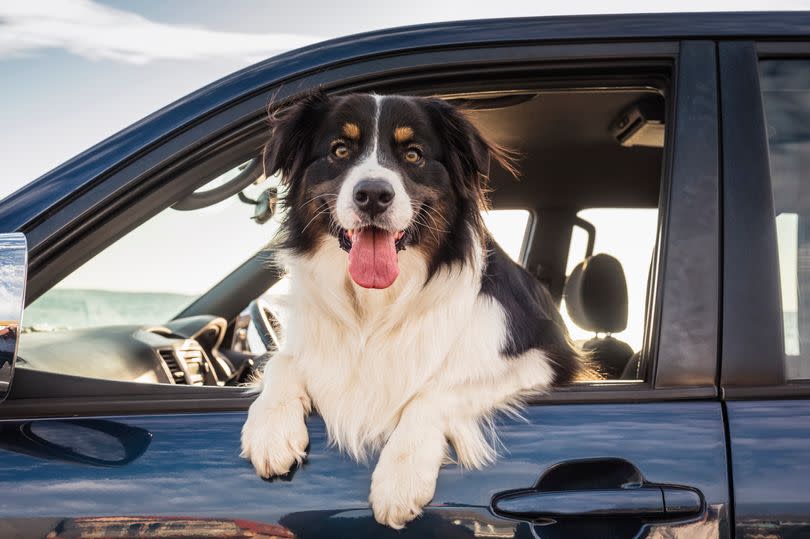Drivers with pets in the car could face £5,000 fine for breaking little-known rule

Motorists who travel with their pets could face fines up to £5,000 due to some lesser-known rules. A recent study shows that three-quarters of dog owners plan to take their pets on holiday in 2024.
However, whether they're staying in the UK or going abroad, drivers could be penalised if they don't ensure their pets' safety while driving. Car insurance experts at Compare the Market have highlighted the road rules pet owners need to follow and provided useful tips for driving with pets as summer approaches.
According to The Highway Code's rule 57, animals must be suitably restrained at all times in a vehicle. This is to prevent them from distracting the driver and to ensure everyone's safety in the car.
Get the latest news straight to your phone by joining us on WhatsApp
Failure to comply with this rule could result in drivers being charged with careless and inconsiderate driving, leading to an unlimited fine and three to nine points on their licence. Furthermore, if an unrestrained pet causes an accident, drivers may find their car insurance provider refuses to cover the costs, reports Birmingham Live.
Here are five top tips for driving with pets to keep everyone safe and avoid potential fines:
Use a crate or carrier: One of the most effective ways to ensure your pet's safety in the car is to place them in a crate or carrier. It should be well-ventilated, provide enough space for the pet to stand up and turn around, and it should also be securely fastened to prevent it from moving around.
Different animals might also have slightly different needs. For dogs, it's important that they're able to see their owner out of the carrier to reduce their anxiety.
Cats and rabbits will want their favourite items in their crate to make them feel safe.
Buy comfortable restraints: For dogs in particular, using a specialised harness or seat belt can be an alternative way to keep them safe and restrained while in a vehicle. These will allow them to partially move and even sit upright.
Drivers just need to make sure they are restrained enough so they aren't able to hang their heads out of the window, as dust or debris can fly into their eyes, and they are more at risk of serious injury.
Never leave your pet alone in a vehicle: Even if it doesn't seem that hot outside, cars can heat up quickly, especially when in direct sunlight. Animals don't have the same ability to regulate their bodies as humans do, so parking in the shade or cracking the window isn't enough.
Drivers are advised to pack essentials for their pets, including food, bowls, leads, poo bags, and medication, along with extra supplies in case of emergencies. It's crucial to keep pets hydrated during the journey.
Water should be readily available for pets during the drive. If spillage is a concern, drivers can opt for specialist bowls designed for use in vehicles.
Regular stops to check on pets are recommended for motorists. Look out for signs of overheating or car sickness, such as excessive panting.
These breaks also allow pets to exercise, with many motorway service stations providing grassy areas for pets and owners to stretch their legs.
However, rule 56 of The Highway Code states that dogs should not walk on a road unattended. Therefore, if drivers stop to let their pets stretch their legs, they must ensure they keep them on a short lead at all times when walking on a pavement, road, or path.
Get the latest breaking news and top stories from Nottinghamshire in our daily newsletter

 Yahoo News
Yahoo News 
